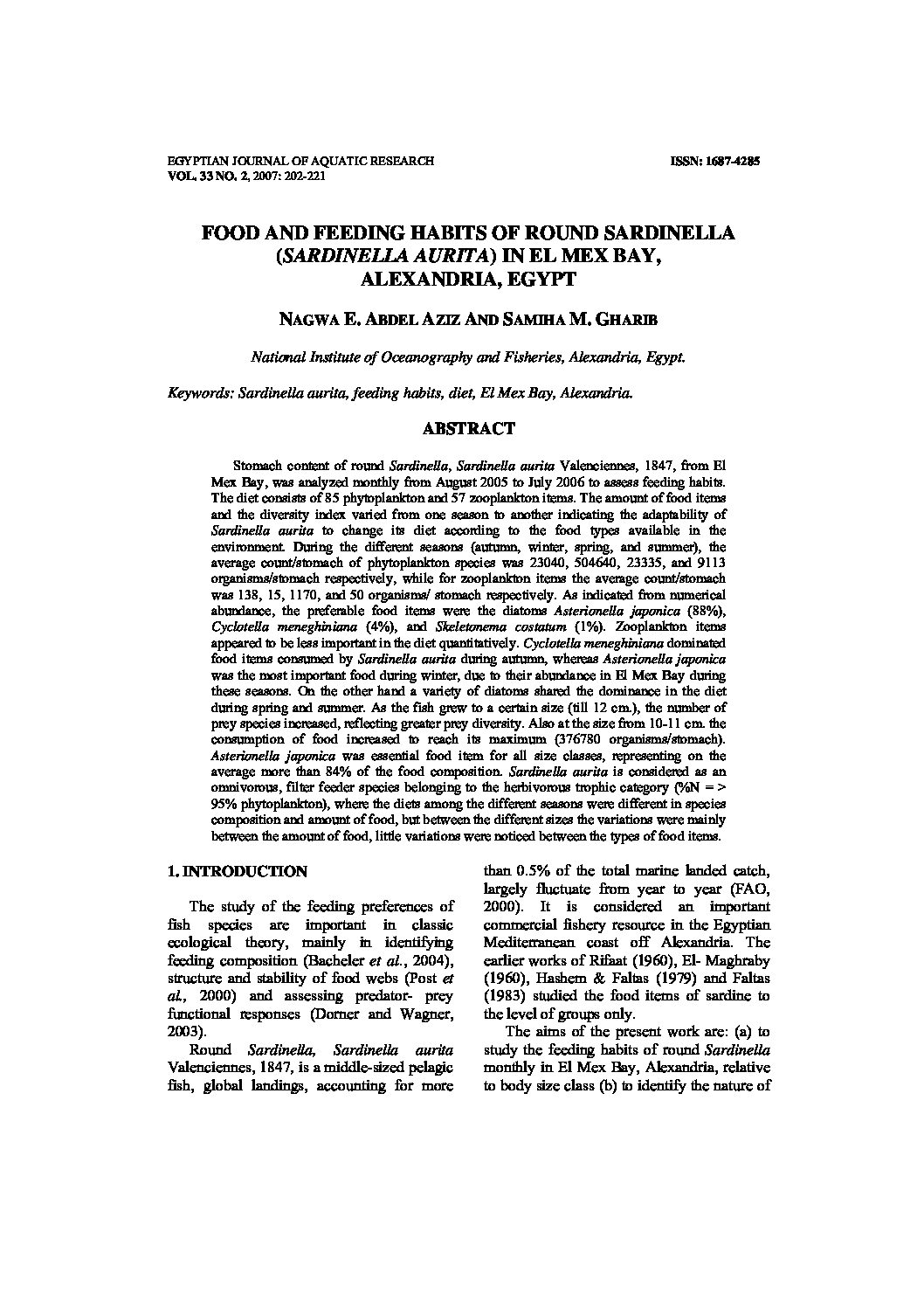Categories
vol-33FOOD AND FEEDING HABITS OF ROUND SARDINELLA
(SARDINELLA AURITA) IN EL MEX BAY,
ALEXANDRIA, EGYPT
NAGWA E. ABDEL AZIZ AND SAMIHA M. GHARIB
National Institute of Oceanography and Fisheries, Alexandria, Egypt.
Keywords: Sardinella aurita, feeding habits, diet, El Mex Bay, Alexandria.
ABSTRACT
Stomach content of round Sardinella, Sardinella aurita Valenciennes, 1847, from El
Mex Bay, was analyzed monthly from August 2005 to July 2006 to assess feeding habits.
The diet consists of 85 phytoplankton and 57 zooplankton items. The amount of food items
and the diversity index varied from one season to another indicating the adaptability of
Sardinella aurita to change its diet according to the food types available in the
environment. During the different seasons (autumn, winter, spring, and summer), the
average count/stomach of phytoplankton species was 23040, 504640, 23335, and 9113
organisms/stomach respectively, while for zooplankton items the average count/stomach
was 138, 15, 1170, and 50 organisms/ stomach respectively. As indicated from numerical
abundance, the preferable food items were the diatoms Asterionella japonica (88%),
Cyclotella meneghiniana (4%), and Skeletonema costatum (1%). Zooplankton items
appeared to be less important in the diet quantitatively. Cyclotella meneghiniana dominated
food items consumed by Sardinella aurita during autumn, whereas Asterionella japonica
was the most important food during winter, due to their abundance in El Mex Bay during
these seasons. On the other hand a variety of diatoms shared the dominance in the diet
during spring and summer. As the fish grew to a certain size (till 12 cm.), the number of
prey species increased, reflecting greater prey diversity. Also at the size from 10-11 cm. the
consumption of food increased to reach its maximum (376780 organisms/stomach).
Asterionella japonica was essential food item for all size classes, representing on the
average more than 84% of the food composition. Sardinella aurita is considered as an
omnivorous, filter feeder species belonging to the herbivorous trophic category (%N = >
95% phytoplankton), where the diets among the different seasons were different in species
composition and amount of food, but between the different sizes the variations were mainly
between the amount of food, little variations were noticed between the types of food items.







